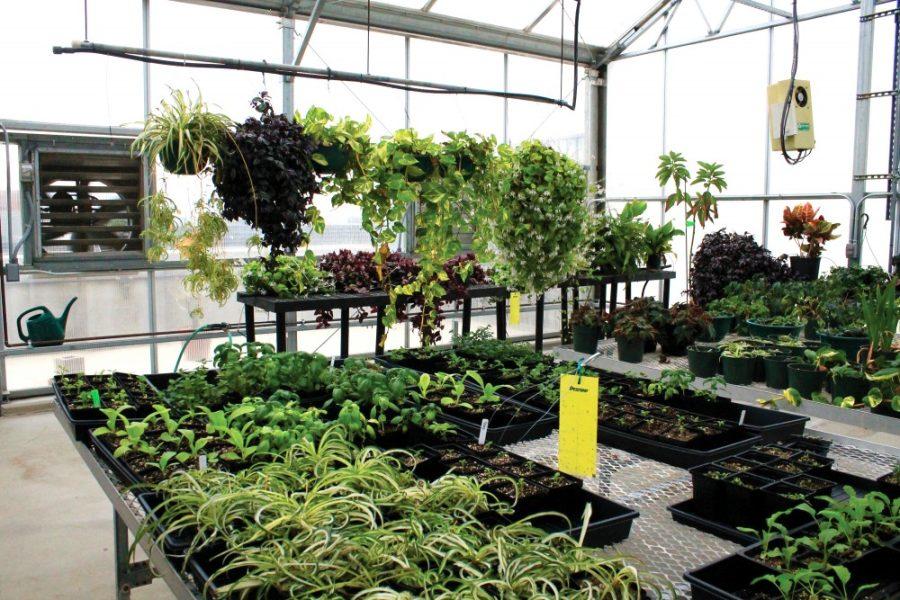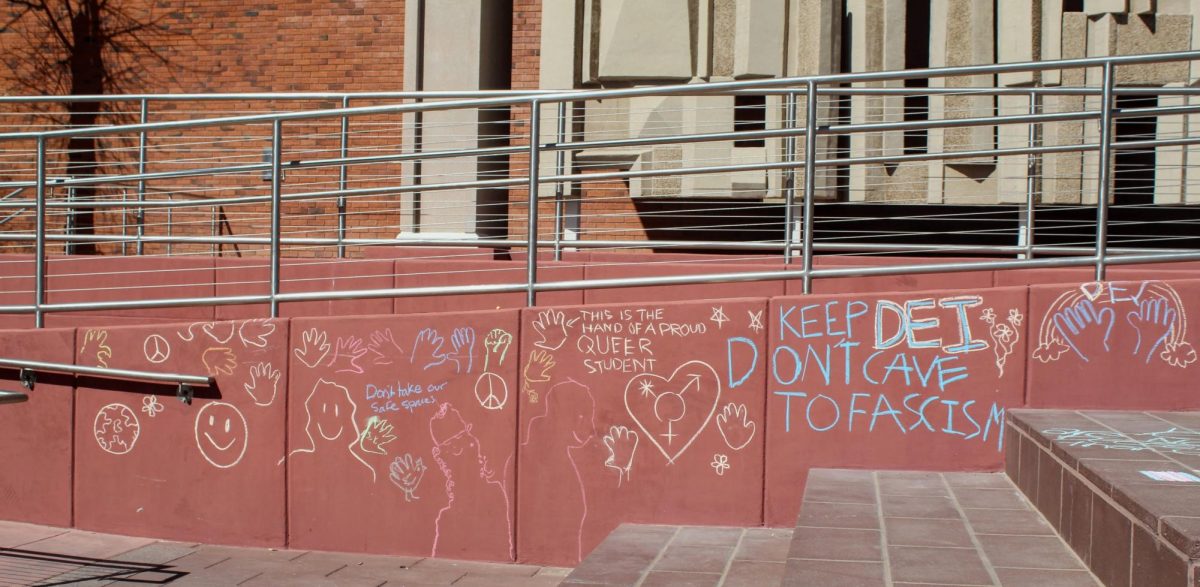Located in the center of the Sonoran Desert, the UA may not seem like the most ideal landscape for various plant species to thrive.
However, tucked away across the UA campus lies a world of both local and exotic seed.
The Life Sciences Student Association is a student-run club on campus dedicated to education about the importance of plant life in the hopes of creating a more sustainable environment through gardens and greenhouses on campus.
The club uses two grant-funded greenhouses, located on the top of the Sixth Street Garage, to teach students about the art of growing plants and sustaining a green environment.
“Unless you’re eating bacteria or something, you are eating plants,” said Stephen Jinga, a senior studying plant and environmental science and the outreach coordinator for LSSA. “We like to teach people that growing plants is easy and that they play a big role in your life.”
Sustainability in Tucson is a major objective that the LSSA strives toward while working in the greenhouse. The club uses techniques like propagation and hands-on gardening to promote sustainability.
The LSSA is also an active partner in multiple farmers’ markets in Tucson. The club sells its products at various markets throughout the city, including the Heirloom Farmers Market, every Sunday. The LSSA can also be spotted on the UA Mall selling small plants twice a month on Wednesday .
While buying local may not seem to have an impact on sustainability, Jinga explains the disparity between the cost of imported produce and the effect it has on the economy.
“What really irks me is that when I go to Safeway to buy apples, I have all these options.” Jinga said. “I have the ones imported from Chile, and they are the same price as those from the USA. … There was energy invested into bringing that over and it’s kind of lost, and that’s just not sustainable.”
The LSSA uses its greenhouse to help close the information gap between consumers and farmers. Jinga said she hopes that, in working at the greenhouse, students will have a better understanding about the growing process and learn to foster their own crops.
“There are problems that farmers face, and people won’t understand those problems unless they start growing their own plants,” Jinga said. “That’s really the whole point of this club: for students to start growing their own plants.”
Not unlike LSSA, the UA Community Garden is another space dedicated to sustainability and plant education.
Located just behind the Highland Avenue Parking Garage, the UACG is home to students passionate about the sustainable cause.
The garden is the 3-year-old project of Students for Sustainability, a club that focuses on all aspects of sustainability and that stresses the importance of community.
Jaclyn Mendelson, a plant sciences senior, UA student gardener and the vice president of LSSA, explained the importance of the garden and sense of community it brings to both the UA and Tucson.
“The reason why this garden is so important is because it is a communal space,” Mendelson said. “It’s a really great way to bring the UA and Tucson community together, and it’s just an incredible place to be—surrounded by people who care about the Earth.”
Not only does the garden bring a sense of community to students and Tucson through the sale of garden plots, it also fosters a learning environment for the concept of sustainability and how students can help the cause.
At the garden, anyone willing to help can come join in on garden work-days every Friday and Sunday to learn about the gardening and composting processes.
The UACG also has a special section of the garden that is dedicated to making compost out of the discarded food brought in by those who live nearby.
Diana Englert, the chair of the UACG for Students for Sustainability and an architecture senior, explains how the garden promotes a healthy local economy—one of the main goals of sustainability as a whole.
“You have economic sustainability, where you’re selling the plots or the produce,” Englert said. “You are keeping that money in the community, and you are providing a stronger local economy.”
The UACG also works toward a more sustainable way of obtaining water for the irrigation through a new water cistern.
The water cistern will take funneled rain water that is caught at the top of the Highland Avenue Parking Garage and lead it to the irrigation system that will water the garden. The garden plans on implementing the new cistern by the end of the semester and using this as a more efficient method of gathering water for the plants.
Despite waste still being a part of its daily routine, one of the garden’s main roles is promoting awareness of this waste.
Both Englert and Mendelson urge students and community members to be more aware in their efforts to create a sustainable environment. They stress the importance of watching the methods of waste that many overlook on a daily basis and understanding the process of gardening and growth within a community.
“When you start understanding where things come from, you become more aware,” Englert said. “We aren’t just here, things aren’t just given to us; there are people out there making those things. … You are so much more aware of yourself and your impact on the community.”
Follow Lauren Renteria on Twitter.









